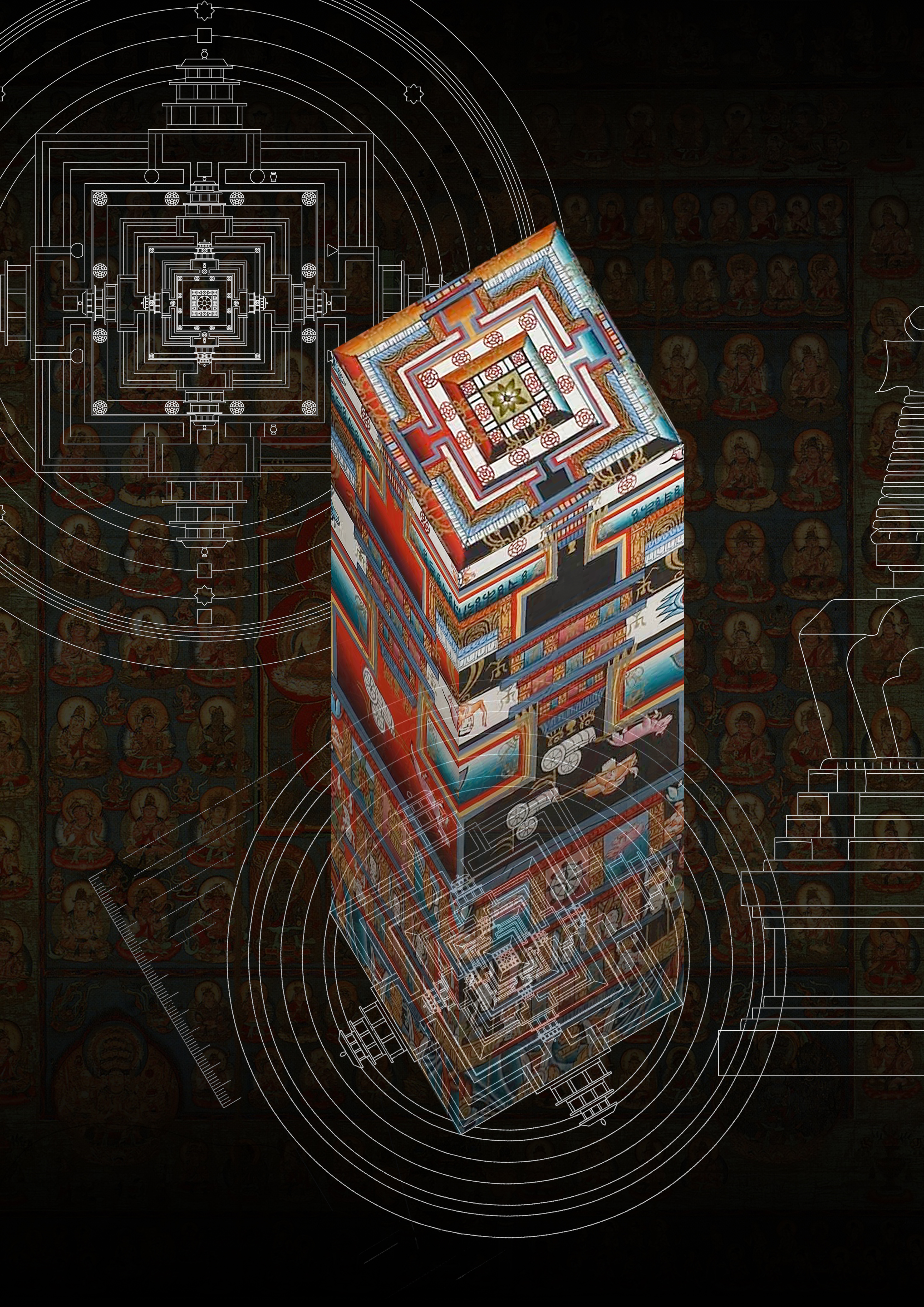|

This thesis aims to explore the expression of Buddhist cosmic diagram- Mandala in a Vertical monastery.
WHAT?

[1] 19th Century Japanese scroll painting of the universe with Mt. Sumeru in the center [2] Samye Monastery, Tibet [3] High density urban environment, Hong Kong
Monastery is the architecture that response to the spiritual world of human and fulfills the basis needs for living. So monastery is a condensation of human civilization and strongly represents the identity of a race.
In Vajrayana Buddhism, the architecture is organized base on the diagram of mandala. Mandala is a 2D diagram representing the Buddhist cosmic concept which is beyond 3D world. In order to organize the vertical monastery well, the Mandala should be interpret in a vertical dimension. A ritual route should be placed in the monastery so help the visitor remind the Buddhist practice and experience the Mandala in a spatial way.
With the revival of Buddhism in contemporary era and the increasing demand for land in urban area, the high rise tower in urban area would be the dominant form of monastery in the future. The thesis would target site in high density urban area. And explore a better solution for designing monastery tower by interpreting the Mandala in the vertical dimension.
WHY?

[1] Chaitya, Ajanta Caves, India 2nd Century BC [2] Angkor Wat, Cambodia, 12th Century [3] Jokhang Temple and the Circumambulation, Lhasa, Tibet [4] Bow-Yun Temple, Taiwan, Studiobase Architects
The early Buddhist architecture consist 3 types of architecture: 1. Viharas, the living cell for the monks; 2. Stupa, a solid earthen mound housing relics of the Buddha, a representation of Buddha; 3. Chaitya, a prayer hall with rounded end for housing smaller Stupas and providing route for circumambulation. The circumambulation has been an important and fundamental ritual since the early era of Buddhism and influenced the design of Buddhist architecture.
Buddhist architecture adapted to various regional culture with spreading. In East Asia temple, Viharas and Chaitya were converted in the form of courtyard housing and the Stupa evolved into pagoda. The circumambulation was extended and combined with the approaching routing and formed a dynamic spatial sequence, which helped the visitors prepare their mental state before reaching the Buddha hall and meditating.
In South East Asia and Tibet, the circumambulation was applied in the diagram of Mandala and drove the layout of monastery. The prayer would experience the Buddhist cosmology and the path of enlightenment through the circulating ritual.
The Buddhist Monastery could be interpreting in term of movement.
Some contemporary monastery was designed as a tower because of the storage of land. The ritual area and movement were just restricted in the lower levels. The upper part of the tower was planned as office and institutional use and had weak connection with the ritual area.
This thesis aims to explore the potential of transforming the Mandala into vertical dimension. By reconnecting the vertical elements with a circulating route, the monastery could provide a better religious experience.
HOW?

[1] Shibaura House, Kazuyo Sejima [2] Study Model, Sou Fujimoto
The Vertical Mandala is achieved through sequential spaces. The architectural symbol and the practice in Buddhism have to be mapped. The spatial experiments should be carried out sectionally and volumectrically. The schedule of the thesis would be as follows:
01 – Built a database of plans of Buddhist architecture in different era and region, built up a evolution map
02 – Analysis changing of routing and layout in monasteries
03 – A series of spatial experiment of routing and programs in vertical dimension
04 – Further design development repose to the site and the context.
|